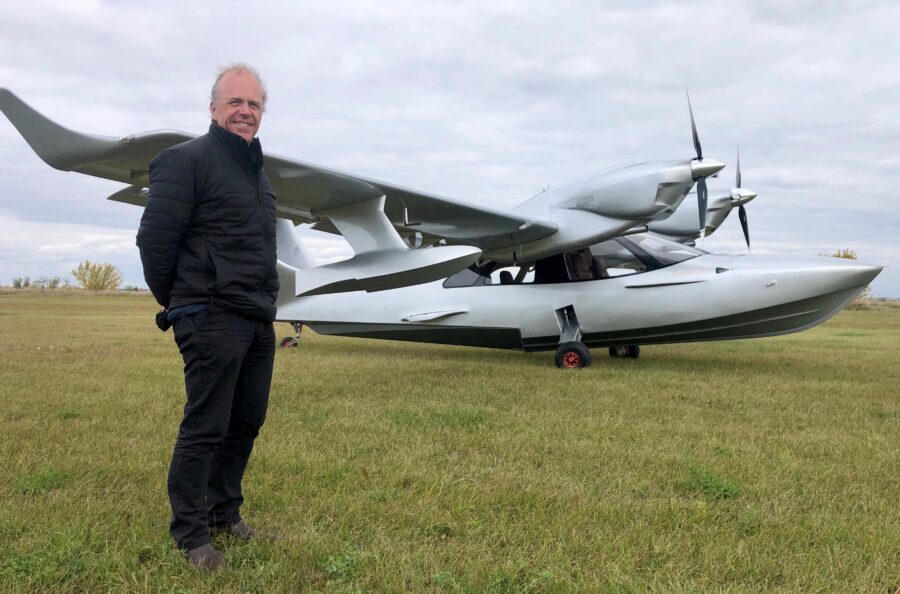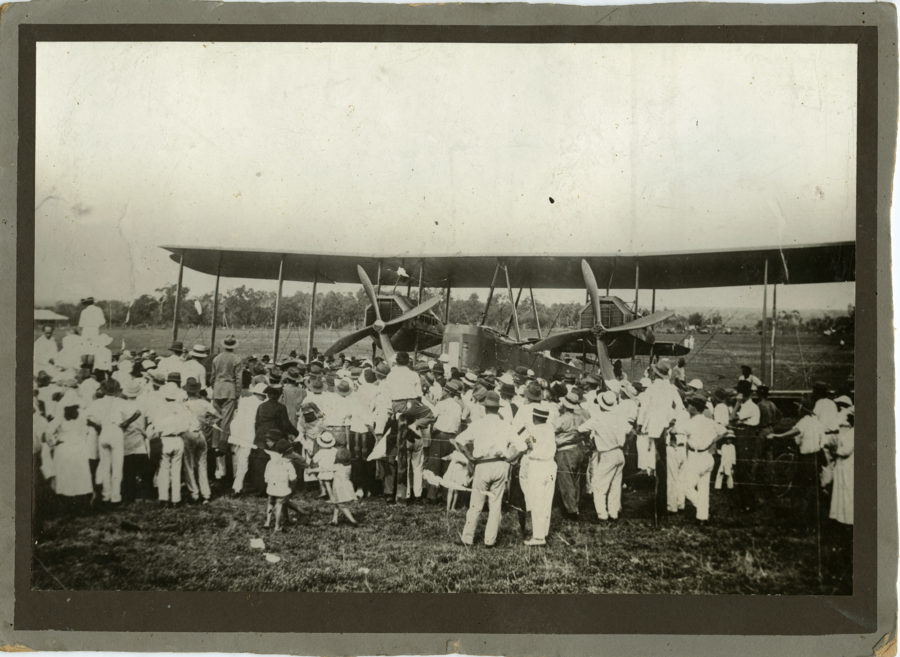Around the nation in 44 days

Trailblazing aviator Michael Smith won the coveted Australian Geographic Adventurer of the Year medallion in 2016 for his round-the-world solo flight in a custom-built seaplane.
Enchanted by the luxury, glamour and romance of the Qantas flying boats of the 1930s, Michael hoped to retrace the original “kangaroo route” between Australia and England as closely as possible. He achieved his goal in Southern Sun, his custom-built amphibious two-seater, single-engine Searey aircraft that can touch down on land or water; its sleek design carrying more than a nod to those elegant flying forebears from the Art Deco era.
Once Michael had arrived safely in England, he resolved to continue onwards and complete a solo circumnavigation of the planet. “I’d made it,” he later wrote in Australian Geographic. “Finally after 60 days in the cramped cockpit, my journey was over. Or so I thought. While I planned ways to send my plane home, I yearned to continue. ‘Why not make it a world circumnavigation’ my wife asked. Suddenly I had a change of plan.”
Michael successfully navigated not just the next hemisphere of the planet, but the mountains of paperwork and permissions to be able to transit numerous airspace jurisdictions. He overflew US aircraft carrier USS Intrepid to land on the Hudson River in New York among many exploits along an aerial route that took him north along the full length of the Mississippi River to Alaska including a month trapped by bad weather in the Aleutian Islands.
He crossed to Russia and came south through Japan, the Philippines and Indonesia to arrive home on 14 November 2015. What started out as a two-month solo expedition turned into a seven-month odyssey with 80 stops and 480 flying hours through 25 countries.

Almost a decade later and Michael is re-enacting another historic period in Australian aviation during a new airborne adventure. This year marks the centenary of the first aerial circumnavigation of Australia. It was a tough undertaking back then and remains so today. In 1924, it was the Royal Australian Airforce, established in 1921 and one of the first such forces in the world, which conducted the flight.
Wing Commander James Goble and Flight Lieutenant Ivor McIntyre were at the controls of a primitive and fragile aircraft, the Fairey Mk IIID seaplane, which they navigated through remote, inhospitable terrain and unpredictable weather. They covered a distance of approximately 13,600km in a journey that began at Point Cook in Victoria on 6 April and finished at St Kilda Beach in front of 10,000 spectators 44 days later on 19 May 1924. They were awarded the 1924 Britannia Trophy.
During April and May this year, Michael will retrace this historic journey in his beloved Southern Sun on an Australian Geographic Society-sponsored expedition. The original route and exact dates will be followed as closely as possible to properly honour the anniversary and the achievement. While the technology has come a long way, the unpredictability of the weather and sea conditions remains much the same.
“Like a lot of pilots, I love going on an adventure,” says Michael. “I particularly enjoy historical re-enactment flights as it gives a purpose for my mission, and in reflecting upon how far we’ve come in 100 years, we also learn about the positive, life-changing effects of aviation. No other mechanical advancement has combated the tyranny of distance in Australia so effectively.
“It’s both fun and entertaining, and also a pertinent reminder, when we constantly face pressures on airport infrastructure around the country, we should remember that 100 years ago it was only possible to complete a circumnavigation by seaplane owing to the lack of airports. This landmark flight (in 1924) surveyed locations for landing fields, and soon after regular planes could crisscross the country, opening it up for health, agriculture, business and recreation.”
Weather permitting, Michael will depart from Point Cook in Victoria on Saturday 6 April and arrive in Sydney’s Rose Bay later that day. When not attempting epic recreations of historic flights, Michael owns and operates a series of heritage cinemas including the historic Sun Theatre, a stunning art deco cinema in Yarraville in Melbourne which he has lovingly restored from a near-shell to its current glory.
You can follow Michael’s progress through the blog on our website and social channels, and also on his own website where you can see a map of the proposed route and perhaps catch up with him along the way.


